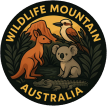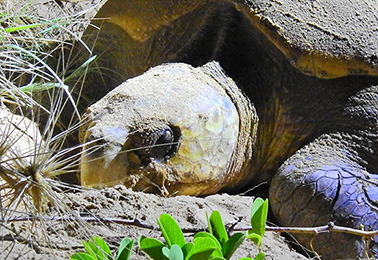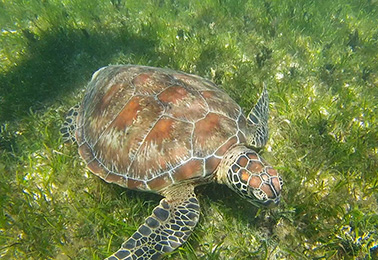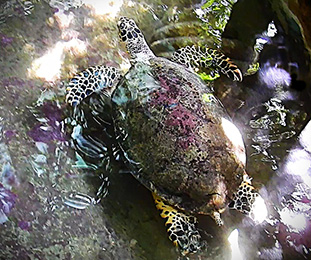SEA TURTLES
Australia’s Majestic Sea Turtles
Australia is a haven for sea turtles, sheltering six out of the world’s seven species along its remarkable coastline. These ancient mariners have journeyed the oceans for millions of years, yet today—just as in the distant past—they faithfully return to Australia’s sandy shores to nest and ensure the survival of their species.
Meet Australia’s Sea Turtles
| Species | Distinctive Features | Key Habitats in Australia |
|---|---|---|
| Green Turtle | Green-tinted fat, olive-brown shell | Great Barrier Reef, Coral Sea |
| Loggerhead Turtle | Large head, strong jaws | Queensland eastern shores, Bundaberg |
| Hawksbill Turtle | Narrow head, serrated shell edges, beaklike mouth | Northern tropical waters |
| Flatback Turtle | Flat, olive-grey shell, unique to Australia | Northern sandy beaches |
| Olive Ridley Turtle | Smaller, olive-coloured shell | Northern coasts (rare arribadas) |
| Leatherback Turtle | Leathery, flexible shell, largest species | Open oceans, east and west coasts |
A Journey Through the Life of a Sea Turtle
Picture a moonlit night on a remote beach in northern Australia. The air is tinged with salt, the sand cool beneath your feet. Silently, a female Flatback Turtle emerges from the gentle surf. Her massive flippers leave a trail as she crawls towards the dunes, guided by memory and instinct. Digging a nest cavity with measured patience, she deposits round, leathery eggs, each one a promise of new life. After carefully burying the clutch, she slips back into the dark water, vanishing as quickly as she arrived.
Weeks later, a ripple of movement stirs beneath the sand. Tiny hatchlings, no bigger than your palm, break free and scramble towards the shimmering sea, propelled by the moon’s reflection. Each step is a race against time—shadows swoop overhead, the air fills with the scent of salt and adventure. Those that reach the safety of the water begin a perilous journey that spans thousands of kilometres and decades.
The Unique Charms of Each Species
Green Turtles: Known for their tranquil faces and gentle demeanour, Green Turtles glide gracefully through seagrass meadows, cropping the green shoots like underwater gardeners. Their vegetarian diet helps maintain healthy seagrass beds, which are nurseries for many marine creatures.
Loggerhead Turtles: These robust turtles use their powerful jaws to crack open crabs and molluscs. Stand knee-deep on a Bundaberg beach during nesting season, and you may hear the soft sounds of nesting females shifting the sand, surrounded by the scent of coastal flora and salt air.
Hawksbill Turtles: With their strikingly patterned shells and curved, hawk-like beaks, they feed on sponges within vibrant coral reefs. Their work controls sponge populations, supporting coral diversity and the entire ecosystem.
Flatback Turtles: Uniquely Australian, Flatbacks prefer calmer, nearshore waters and rarely venture far into the open sea. Their flat, smooth shells feel almost soft to the touch, and their nesting sites are found solely on Australia’s northern shores.
Olive Ridleys: Though rare in Australia, these turtles stage stunning mass nestings called arribadas in other parts of the world. In Australia, however, they are shy, and sightings are special occasions.
Leatherback Turtles: By far the largest of sea turtles, Leatherbacks can dive to extraordinary depths in search of jellyfish, often braving the cold and dark of the open ocean. Running your hand over their back, you’d find rubbery, ridged skin instead of a hard shell.
Conservation: Protecting Ancient Lives
Sea turtles today face a host of threats:
- Loss of nesting habitat due to coastal development
- Marine debris such as plastics, which can be ingested by mistake
- By-catch in fisheries—when turtles are accidentally caught in fishing gear
- Climate change, affecting beach temperatures and, consequently, the sex ratio of hatchlings
- Predation from invasive animals like feral pigs and foxes, which raid nests
Australia’s conservation efforts aim to:
- Protect crucial nesting beaches with volunteer patrols and monitoring
- Promote turtle-friendly fishing practices using turtle-excluder devices
- Raise public awareness and reduce plastic pollution
A Call to Conservation
Imagine standing on an Australian beach and watching a mother turtle, her shell glistening under the moonlight, burying her hopes in the sand. Each new hatchling is a symbol of resilience in the face of extraordinary odds. Our actions—whether reducing plastic use, supporting wildlife protection, or simply sharing knowledge—shape the future for these gentle ocean travellers.
By embracing our role as guardians of the coast, we help ensure that future generations, too, will marvel as sea turtles return to the rhythm of ancient tides.
Every effort, large or small, ripples into the future—protecting not just sea turtles, but the web of life that relies on their ancient, enduring voyage.



